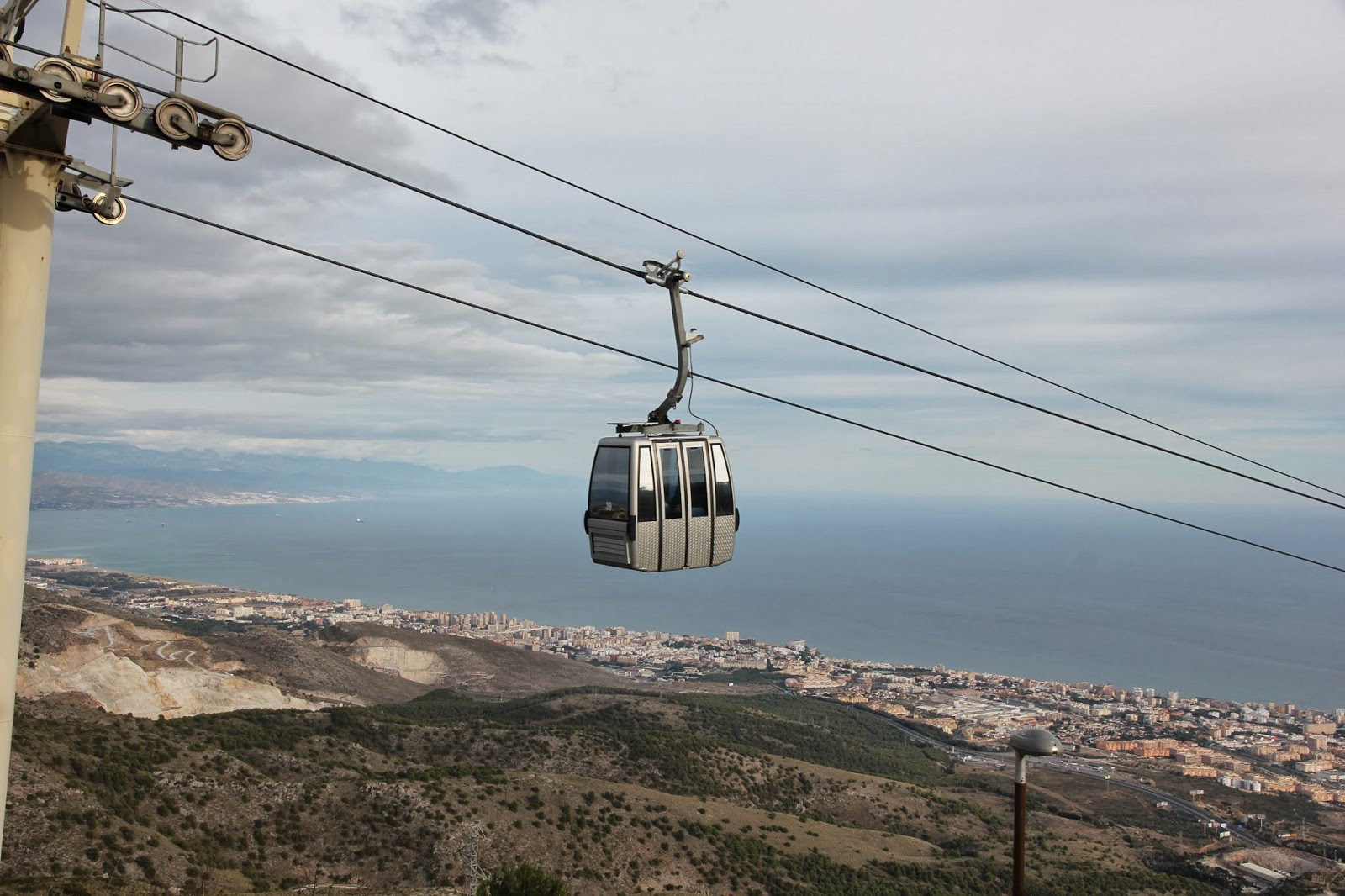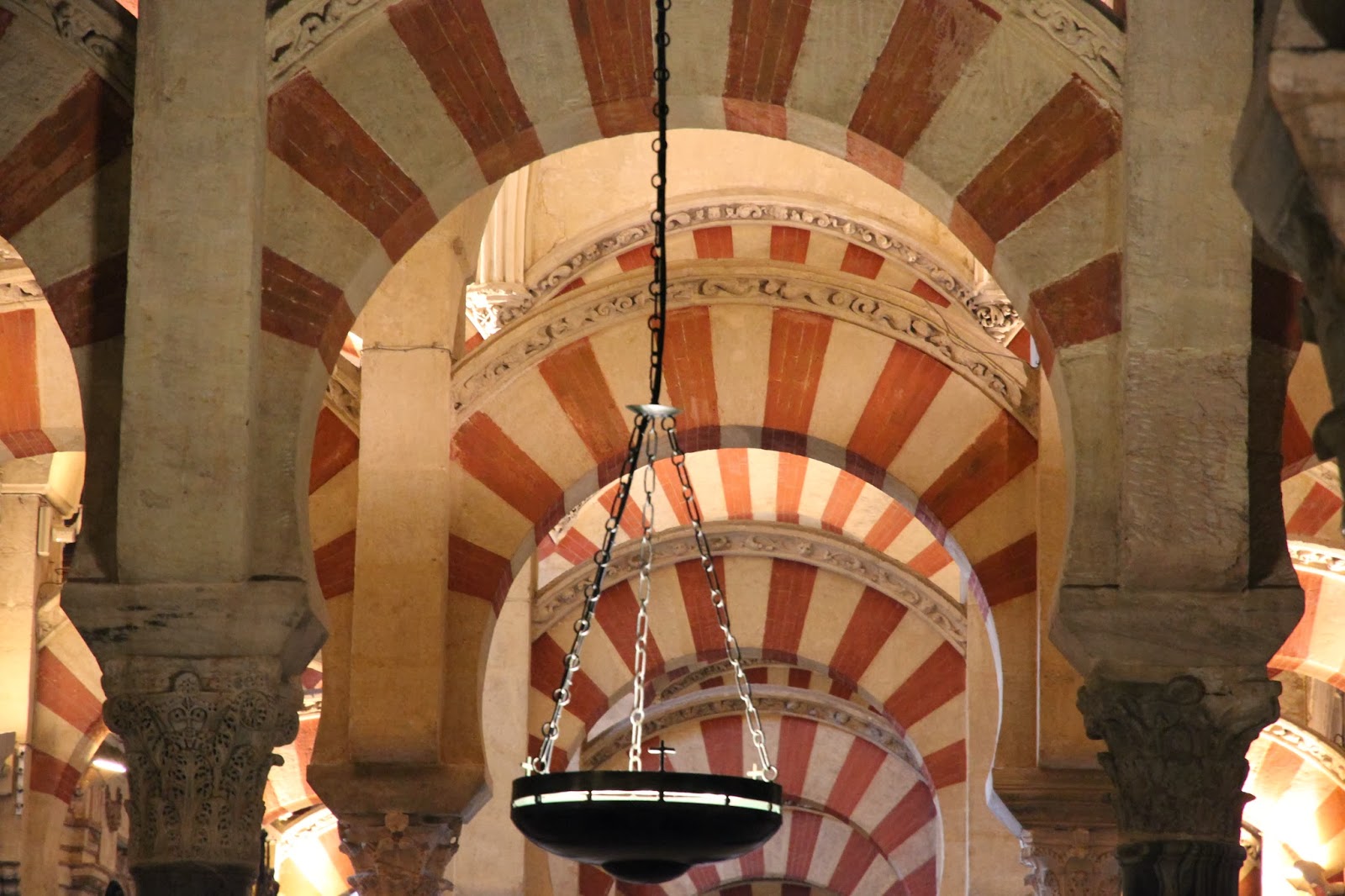EL CAMINO - THE FINALE
Feliz Ańo Nuevo and welcome to the first day of 2014. Don L's itinerary hasn't gone exactly to plan up to now - although there hasn't been any bad consequences, quite the contrary - so it's no surprise when the plans for new year's day are totally torched. After a year here one would expect we'd have adjusted to those things peculiarly Spanish and in the main we have. But, even in tourism Mecca, it comes as a surprise to find that pretty much
everything is shut on NYD - bistros, supermarkets,
TOURIST ATTRACTIONS, everything. The Spanish hold on to what is now an old fashioned concept that Sundays and public holidays are meant for everybody to have off, and do so accordingly. I guess it's their way of saying
SLOW DOWN WORLD, and I can respect that, even if it means we can't visit Nerja today and we can't get food etc. Anyway, we do eventually find somewhere for
desayuno and we finally decide to try what is par for the breakfast course in Andalusian (nowadays all over) Spain -
tostada con tomate (fresh grated tomato and olive oil). It shouldn't come as a surprise but it is
delicious and quite refreshing - I might have to ditch special K in future. (
Travel Tip: certainty is a good thing. In spain, no matter where you are, you can be
guaranteed that, as certain as the sun rising every day, if you ask for a
'sandwich mixto' you will
ALWAYS get a
toasted ham'n'cheese sandwich, there is no variation to this unless you ask for it).
 |
| Tostada con tomate y sandwich mixto |
 |
| Churros y chocolate caliente - under mum's watchful eye |
 |
| Sandwich mixto |
 |
| Note the cafe latte and the crystal olive oil decanter! |
We take the kids to
Malaga beach where they happily play in the sand. We expected glistening white sandy beaches as far as the eye could see but instead find a quite small stretch of
black, pebble speckled sand (bordered by an endless sea of high rise apartments - it's not particularly picturesque. There are actually
people swimming in the Mediterranean, clearly
English or German tourists because no one in their right mind swims in the sea at this time of year.
BUT, it has to be said that it is in the mid-teens and convention says that although the Costa del Sol has 4 seasons, it is 1
Summer and 3 Springs.
 |
| Malaga beach |
 |
| Tourists! |
We decide to fill our day in with a drive towards Marbella, and arrive unexpectedly at
Benalmadena where this a
teleferico (cable car) operating. It takes us from the coast up to the top of the
Calamorro Mountain, 800 metres above sea level. At the top, we can see the
Costa Del Sol below us, the
Sierra Nevada to the north, and
Gibraltar and the African coast to the south - spectacular stuff. It also looks down on quarries where
marble is dug out of the mountain side (some of the world's finest marble is to be found along the Spanish south coast). There is also an enclosure full of various birds of prey which are exhibited daily - the less said about the facility the better (it's simply not right to put eagles, falcons, vultures and giant owls in small cages).
 |
| In the teleferico |
 |
| The teleferico |
 |
| Looking south |
 |
| Looking north |
 |
| Marble mining |
 |
| Las chicas - nice gloves Dulcinea |
 |
| Critters |
Unfortunately, everywhere that Lidia has recommended is closed for the holiday, but a few restaurants have opened and we make our choice -
Taberna Cantarrana - it's the wrong one! We get the
waiter from hell ( he mutters under his breath unaware that Aimee can speak Spanish and translates for us accordingly - in a display of new found temperance, Don L keeps his powered dry!) and the food is deplorable. This is a real shame as we have decided to try the southern Spanish specialty of
'Boquerones Pil Pil' (spicy anchovies) and '
Gambas al Jibia Plancha' (grilled prawns and cuttlefish). I'm sure in the right establishment it's great, but not tonight. It's an all round thumbs down experience, only the 2nd time we've delivered this verdict in Spain.
Time to push on. Malaga and the Costa del Sol were an interesting visit but we won't be back. (
Quirky historical fact re Malaga - in
1781 Spain and France supported America in the
War of Independence against Britain.
La Manquita ("the one armed"), i.e. Malaga Cathedral - see photo in previous blog - was to have
two towers but the money to construct it was gdiven to the war effort and the 2nd tower has never been built). We decide to go to
Nerja after all. This is the home of the
Cueva de Nerja (Nerja Caves), discovered only in
1959 by 5 intrepid schoolboys (who probably should have been in skool!), and the location of the
world's largest limestone pillar (thus far discovered). We get there at 1:45pm and are advised that we only have 15 minutes because it closes from 2:00-4:00 (I shouldn't be surprised but I am)!
BUT, fortune smiles on us as we decide to take a
private guided tour. We stay underground for
2 1/2 hours and it is awesome. The 'famous' column is gigantic, the expanse where international opera and ballet performances are held annually is huge, and there are stalagtites galore, but surprisingly few stalagmites. But how about this -
our guide is a man of some renown. He is
Miguel Joven, a star of the
Spanish TV series from the 80s '
Verano Azul' (Blue Summer). He's a lovely chap, and very knowledgeable. Chatting with us afterwards, he gives us a tip on where to go next (nicely!), and when talking about acting as a guide he surprises us by uttering the same words as Lidia -
"at least I have a job"…tough times indeed.
 |
| Miguel Joven y los ninos at Cueva de Nerja |
 |
| The column - massive |
Miguel's tip is to go exactly 7km inland to a little
puerto blanco untouched by tourism - we wind our way up the mountainside and come to
Frigiliana, and Miguel is right on the money. It's a beautiful little hamlet and we enjoy a merienda in the setting sun.
 |
| Frigiliana |
It's back into Rocinante and we head north on a 2 hour drive north. The weather changes immediately and it's cold and very wet when we arrive in
Cordoba. I drop the team off at our hotel and look for a car park (
Travel Tip: there are no car parks in the middle of the Old Town in Cordoba, but you can drive in and drop your bags off). The manager of our hotel is very helpful and we're soon in a local restaurant enjoying a wholesome repast before heading to our room. We don't realise it yet (by virtue of it was so cold and wet on arriving we didn't take notice of our surroundings) but we had struck the hotel jackpot!
It's pouring on our last day, but it doesn't matter because
Los Patios Hotel is literally directly across the street from our destination. Brekky and then a quick dash to the other side of the street finds us standing in one of the
jewels of Spain -
La Mezquita Catedral de Cordoba. Sevilla Cathedral
WILL take your breath away; the Mezquita will make your
eyes pop out. We haven't seen anything like it, nor I suspect will we again. Cordoba was once the most important and beautiful city in Europe, awash in cathedrals, places and bath houses. The mezquita was originally the
Visigoth Saint Vincent Basilica built
in the
6th Century. The
Moors built their mosque on top of it in
786AD. The
Reconquest saw Christianity restored and in the
16th Century a complete
Renaissance Cathedral was built I
NSIDE the mosque. The main hall of the Mezquita is made up of more than
800 marble, jasper and granite columns, supporting 400 red and white horseshoe arches. The thing is, you don't need to have a faith to appreciate the magnificence of the Mezquita, or any other cathedral we have visited, they are simply extraordinary creations.
 |
| La Mezquita - the pictures speak for themselves |
 |
| A ceiling dome |
 |
| …more ceiling... |
 |
| ….another dome... |
 |
| ….ceiling... |
 |
| Cathedral within a mosque |
 |
| Tombstone Juan de Castro 969AD |
 |
| …and the roof didn't fall in! |
Afterwards, we wander along the bank of the
Rio Guadalquivir to see the
Alcazar (the orange groves were magnificent) and the
Roman bridge which dates back to
1BC. We find a funky cafe in the old
Jewish quarter and then stroll the old part of the city less frequented by tourists (the hotel manager pointed us in the right direction). It was fascinating winding through the narrow alleyways and past the distinctly coloured buildings (white and mustard). Dinner was once again under the watchful eye of a mounted el toro whilst 2 musicians performed an off key flamenco routine (I've never heard flamenco played on keyboards before!!!). The trip has drawn to a close, all we have to do is get back home.
 |
| Roman bridge 1BC |
 |
| Alcazar |
 |
| Floor ceramics preserved on the walls |
 |
| Orange grove - beautiful |
 |
| Plaza Capuchinos. Cristo de los Faroles |
 |
| Not too easy on the feet |
 |
| Virgin de los Dolores |
We drive home via
Ciudad Real, in the heart of
LA MANCHA (Don L's spiritual home!!). Yes folks, there's a
Don Quixote museum here but we're too wet and freezing to find it - next time. The countryside is superb along the way, we traverse the ubiquitous
olive groves and also come across the first
pig farm we have seen in Spain. We don't see many but they're grazing amongst
acorn tree groves (this is significant, given the very particular characteristics of
Iberica Jamon). We also spot our first couple of
Spanish windmills, albeit in ruins, and I'm tempted to get out my jousting stick and point Rocinante in their direction. Windmills are few and far between but I know they exist in better condition than these, so we shall be back to find them.
 |
| Seen better days |
La Moraleja is reached by dusk and we're home, ready to plan our next quest. Stand by…..





























































